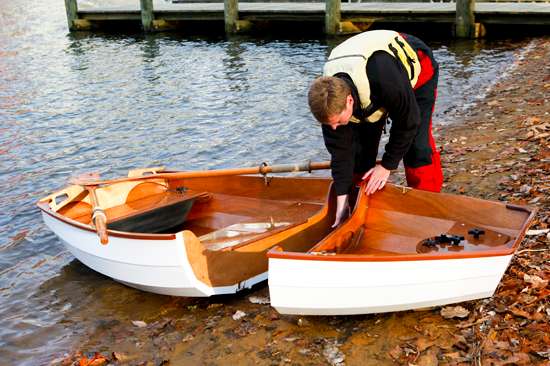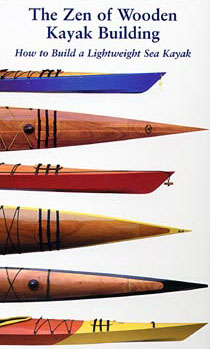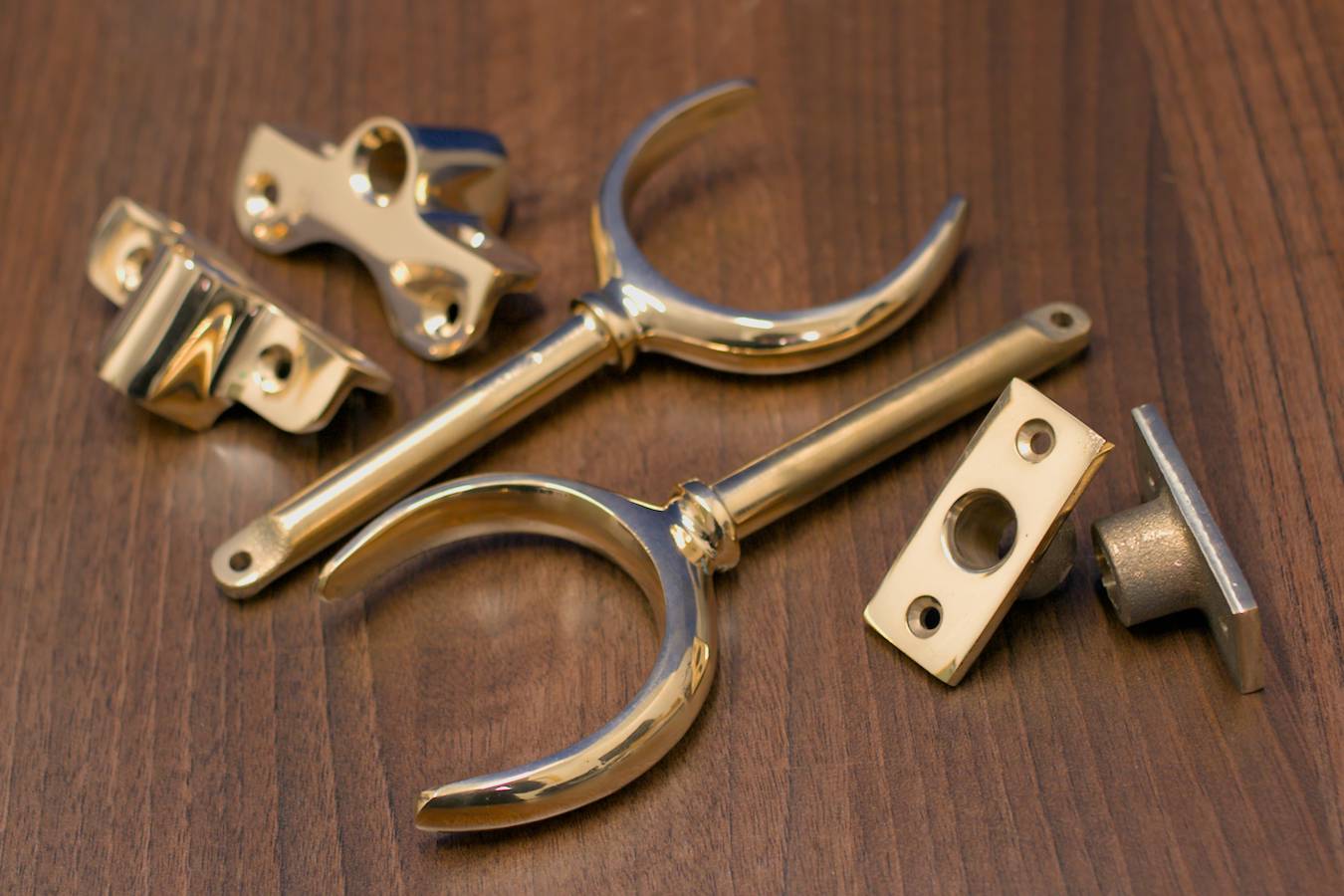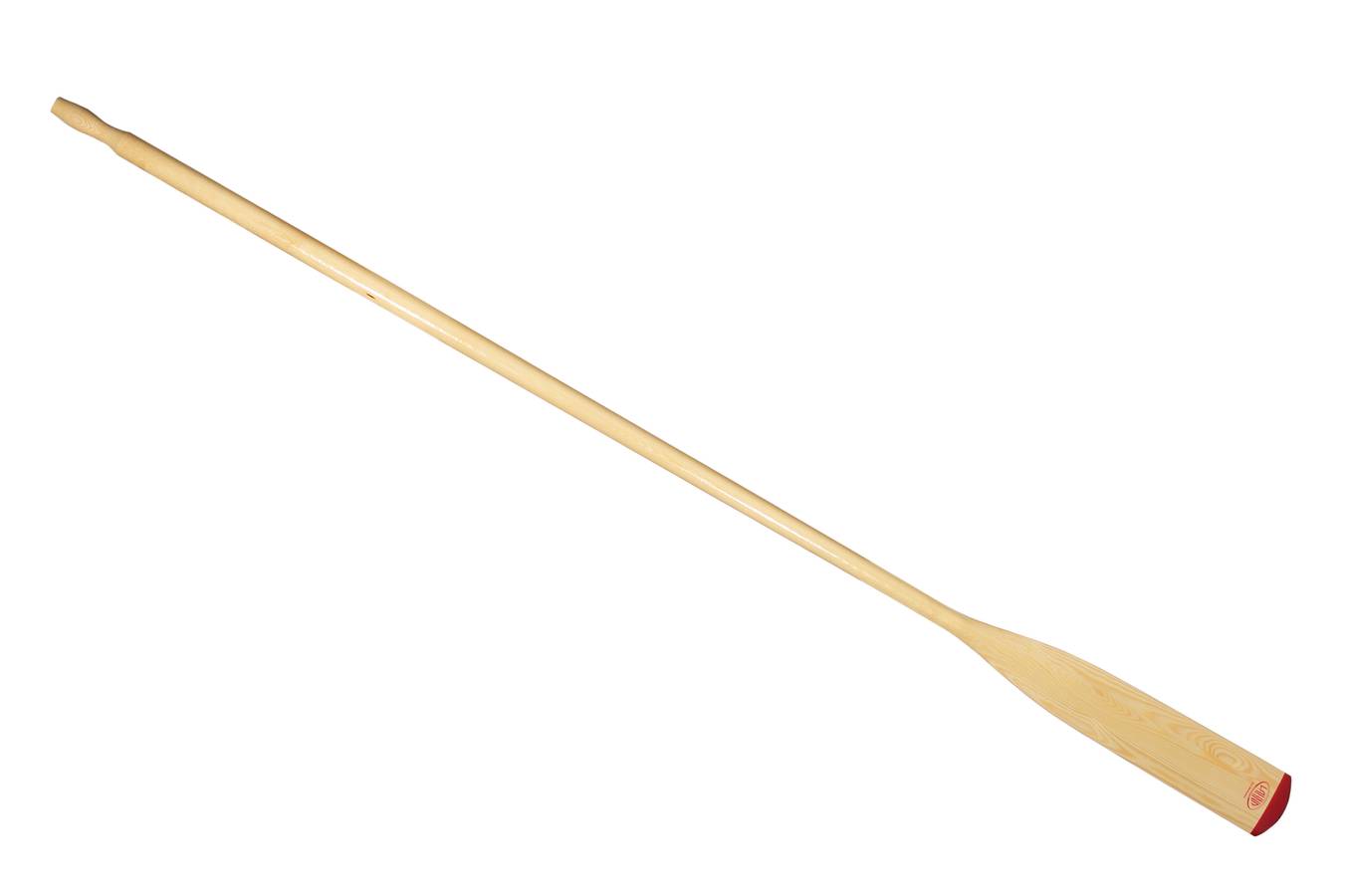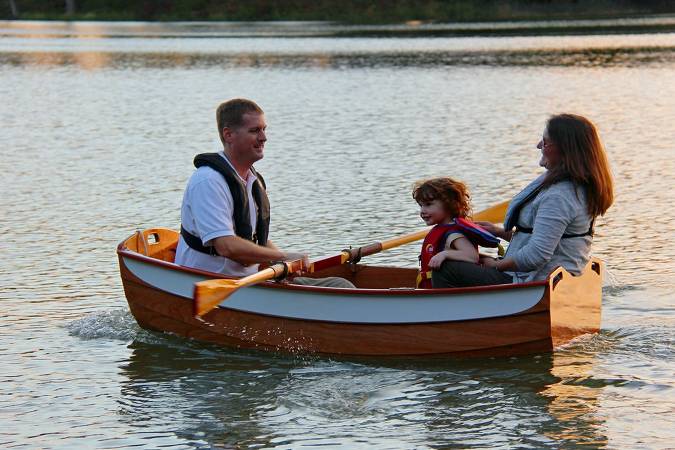

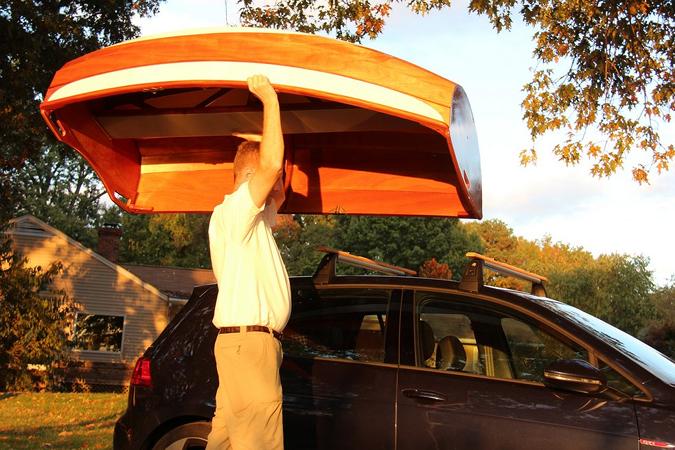
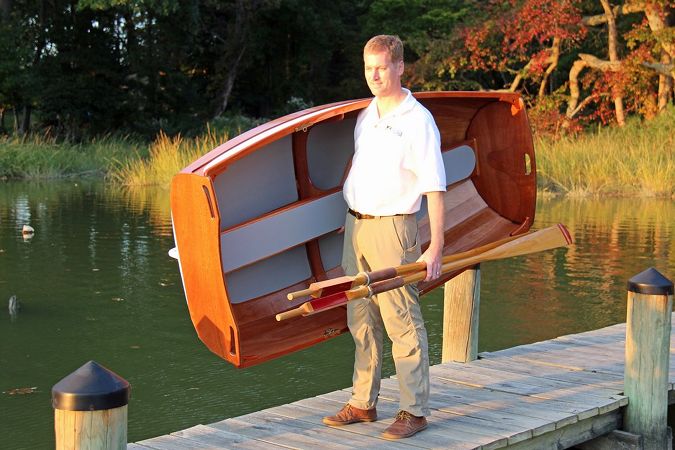
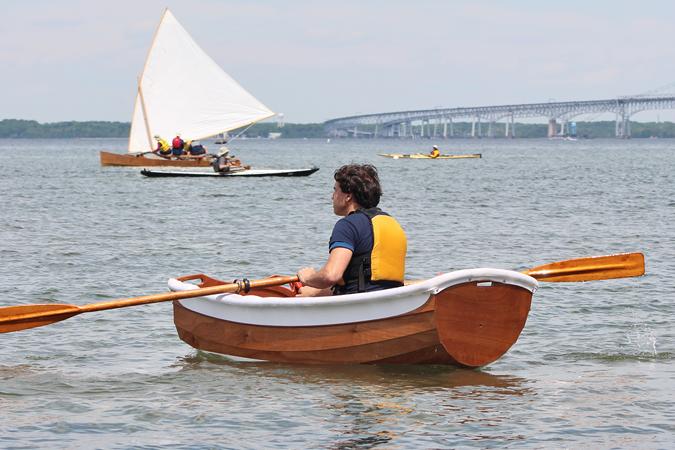
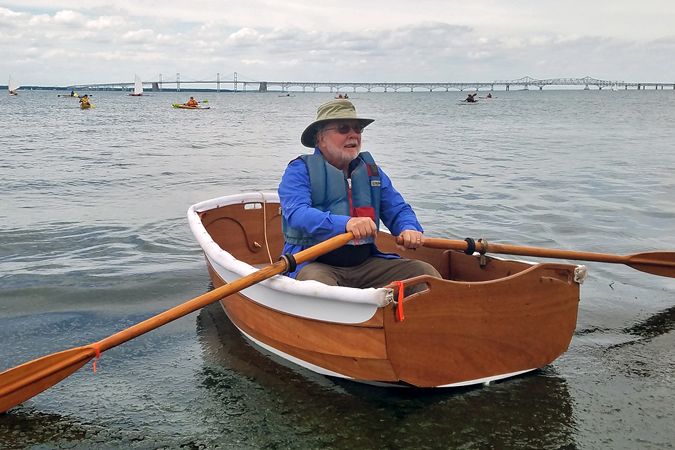






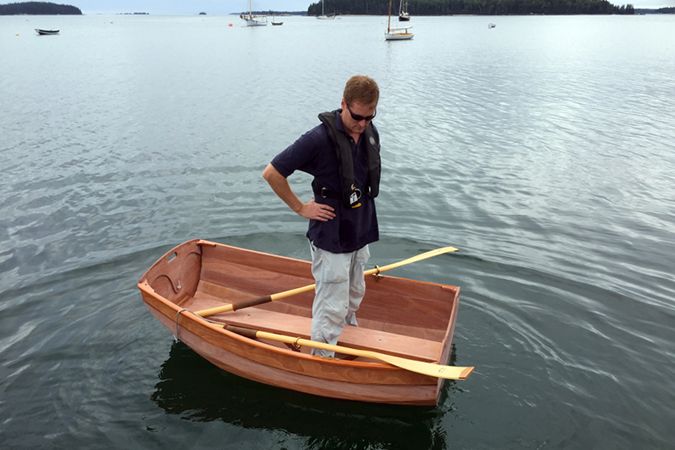
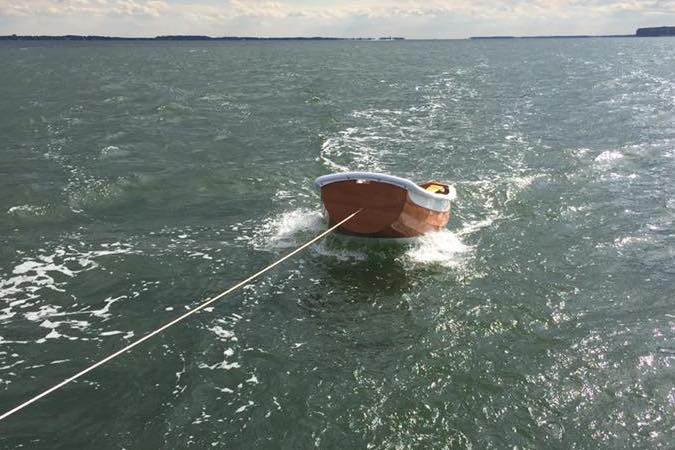
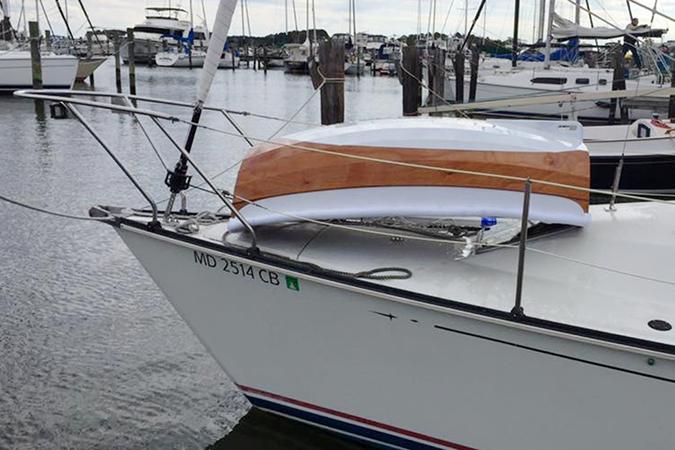
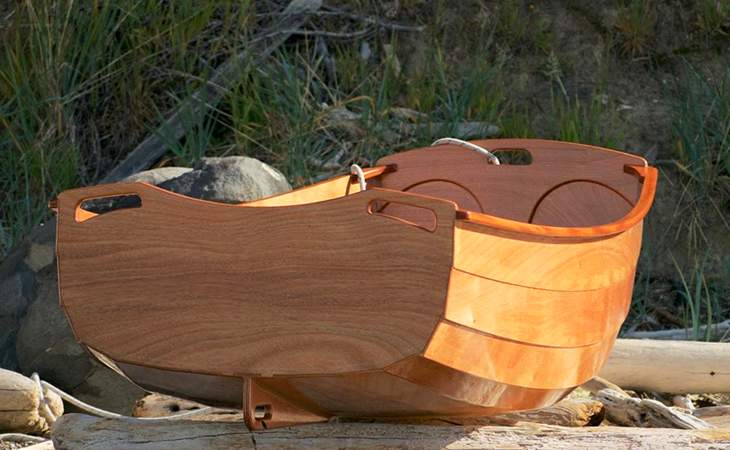
Product Description
The Eastport Ultralight Dinghy is a tiny rowing tender for a small yacht, designed to solve the common problems of storing your tender on the mothership's foredeck and of lifting it onto your car roof. Building on the success of the larger Eastport Pram, the Ultralight Dinghy has a classic clinker-built pram hull that maximises the capacity of a boat this size.
The Eastport Pram is very light for its payload and strength, but it can be challenging to lift onto a cartop on your own if you're tired or have a bad back. A small inflatable is a common alternative, but they make terrible rowing boats and many purists consider a fine clinker dinghy essential to the cruising aesthetic.
Designer John Harris of Chesapeake Light Craft drew up this fine miniature dinghy originally as a personal project, but the interest generated by John's prototype showed him that his was a problem shared by many owners of small yachts. ‘At middle age, I'm just not as strong as I used to be’, says John, ‘I needed a dinghy capable of holding two adults, a small child and the groceries. Yet it had to be as light as a good kayak, so I could get it on and off the car top easily, shift it from the dinghy racks at the marina to the launch spot or get it onto the foredeck of my small cruiser’.
The Eastport Ultralight will appeal to dinghy users with limited storage space and not-so-great upper body strength. ‘It probably helped that I wasn't expecting a whole lot of performance from such a tiny boat’, John says. ‘But I've been delighted with what it can do. You can row the boat faster than you can walk, so a long pull across the harbour is just no big deal’. Nor do loads up to 400 pounds seem to slow it down.
The freeboard is high, actually an inch or two higher than the Eastport Pram's, to make it harder for spray to get aboard and allow for a lot of reserve buoyancy. With six-foot oars you have so much power compared to the boat's weight and wetted surface area that it seems unconcerned with windage. It tows light and dry when empty, with the bow transom well clear of the water.
The centreline rowing bench is in the perfect spot to function as a carrying handle, with the rail hooked on your shoulder.
The boat is extremely easy to build. The CNC-cut hull parts snap together like a jigsaw puzzle, very quickly. It's about a 50 hour project to do a nice job.
There are, of course, some compromises to such a small and light boat. You'll need to use the same caution in stepping aboard as you would in a lightweight canoe, to smoothly transfer your weight to the boat's centreline without it slipping out from under you. It's entirely manageable if you're used to getting into boats with so little inertia. Once aboard, and especially once seated, you'll find the boat is dry and has plenty of stability.
An important trade-off in keeping the weight down is that there is no built-in flotation. The boat is wood so it's not going to sink if swamped, but it would be challenging to self-rescue. You could fit enough foam under the centreline bench to allow a wet rescue and it wouldn't add much weight, but the foam could make it more difficult to carry the boat on shore (you'd lose that vital ergonomic hand-hold) and harder to place your feet near the centreline as you step aboard.
Another compromise in creating an ultralight dinghy is durability. It's hull is a thin shell of 4 mm plywood, which is a good compromise between weight and strength. It's approximately as easy to damage as a well-built kayak or canoe, so it's rugged enough for beach landings, given some care. However, it couldn't be built much lighter without becoming incapable of surviving the kinds of mishaps that routinely befall a tender. The main thing to watch for are sharp rocks or bolts sticking out of pilings. You'll also have to exercise more caution in the dinghy park than you would with a bigger, heavier dinghy.
All surfaces are coated in epoxy and/or fibreglass, so with reasonable care the boat can endure many seasons living outdoors. You will need to occasionally refresh the varnish and paint to ensure that the epoxy coating is protected from UV light.
This boat is for rowing only. It is simply too small to mount an outboard motor or a sailing rig. Build an Eastport Pram if you want to sail or motor.
Six-foot oars are a perfect fit for this boat. They stow inside the boat if you insert the oar blades in the handles in the stern transom. This makes for neat and secure oar stowage.
The kit includes:
- Pre-cut plywood panels with pre-cut joints, pre-drilled tie holes and panel location marks
- Planed Sapele gunwales, stringers and trim
- Sapele quarter knees
- Epoxy resin and activator
- Epoxy fillers
- Copper ties
- Woven glass fabric
- Pair of silicon bronze rowlocks and sockets
- Basic building instructions
- Free technical support from a competent builder
Please note that this boat doesn't yet have a full step-by-step manual, so some familiarity with the stitch-and-glue construction method is assumed.
Wood
This option contains the pre-cut wooden components with pre-cut joints, plus the building instructions. It does not contain any of the epoxy to glue and coat the boat, the fabric or tape nor any of the hardware.
PDF plans and manual
This option is to download the complete plans and manual for building the Eastport Ultralight Dinghy in PDF format. They include three ARCH-D size pages (36″ × 24″ or 914 × 609 mm) plus full-size templates for every part in the boat. The complete assembly manual is also included.
You will need access to a printer/plotter capable of printing a sheet 36″ (914 mm) wide by 198″ (5029 mm) long in order to build the boat using these plans.
After credit card authorisation a download link will be sent to the email address put on the order form.


